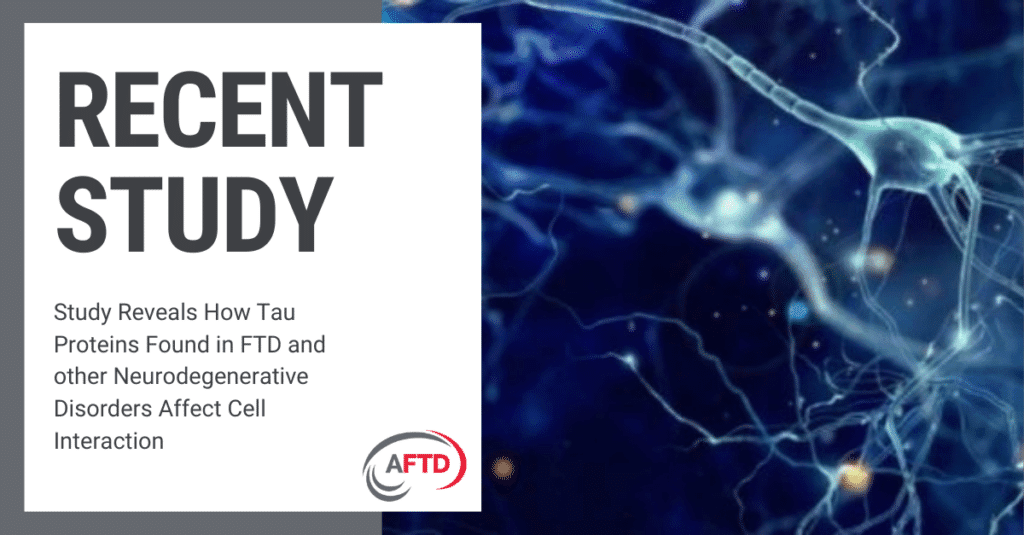Study Reveals How Tau Proteins Found in FTD and other Neurodegenerative Disorders Affect Cell Interaction

Researchers from the Buck Institute for Research on Aging have gained new insight into how the protein tau, which can lead to FTD and other neurogenerative diseases when it accumulates abnormally, affects cells it interacts with and how it can travel from neuron to neuron in a recent paper published in Cell.
“These kinds of studies give us insight into the disease process at the molecular level. It’s actually way more complicated than just a protein that forms tangles,” the paper’s lead author, Dr. Tara Tracy, said in a Jan. 26 Wired article.
Dr. Tracy and her team found that tau is involved with several important cellular activities, such as interacting with more than 30 mitochondrial proteins that helps create cell energy. The researchers used neurons with tau that had the same genetic mutation that causes FTD to better understand how healthy and unhealthy tau proteins affect cells. They discovered that the mutated proteins affect how cells work even before they form toxic, brain-damaging tangles that contribute to FTD and other neurogenerative disorders.
Mutated tau proteins were found to have had fewer interactions compared to healthy tau proteins and had less interaction with mitochondrial proteins. According to the Wired article, that could mean that these proteins are affecting the cell’s metabolism and whether it has enough energy to function properly. The study’s findings also provided insight into how mutated tau proteins use neurotransmitters to travel from their own cells to other parts of the brain.
“I think it would be great to design a strategy to prevent tau associating with vesicles to slow tau spreading,” said Dr. Tracy.
Read the full Wired article here.
By Category
Our Newsletters
Stay Informed
Sign up now and stay on top of the latest with our newsletter, event alerts, and more…
